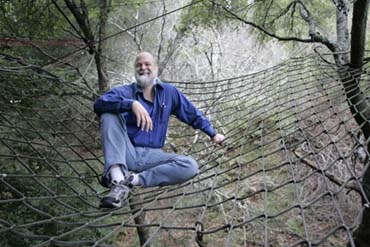The world is no longer your oyster

Tiny plankton called coccolithophores remove carbon dioxide from the air. They make little shells of calcium carbonate from CO2 and when they die, they sink to the bottom of the ocean and make the sediments from which limestone is formed. They are also an important food source for many other creatures in the ocean, including most of what we catch and eat.
But the CO2 that they can't scavenge may cause them to go extinct in as little as 35 years.
What is happening is that CO2 levels are increasing. This is making the oceans more acidic. If the oceans are not slightly alkaline, then creatures that use calcium carbonate for their shells can't make the shells. The calcium carbonate simply dissolves in the less alkaline water.
Of course, if the coccolithophores go away, the CO2 will build up much faster. Other creatures that make their defenses out of calcium carbonate will also go extinct, such as corals, clams, oysters, abalone, mussels -- basically all of the creatures that make the seashells we collect on the beach. All gone. In our lifetime.
Animals that depend on those species will also go away. Starfish, cod, sea otters, walruses -- all feed on creatures that depend on calcium carbonate to survive.
In past periods of high CO2 levels, mass extinctions occurred, and levels of carbon dioxide only fell after mountain formation or new species evolved that sequestered carbon in the soil or in wood fibers. These are slow fixes. We won't live long enough to see them happen.
Present levels of CO2 are higher than at any time during the last 420,000 years, the length of time recorded in Antarctic ice cores. These cores show levels with a brief peak of 315 parts per million. Current levels are 381 ppm, and are expected to reach as high as 550 ppm by 2050.
Feedback mechanisms mean that extra carbon dioxide in the atmosphere causes heating, which causes more carbon dioxide and methane to be released from the ocean, which causes more heating.
It's not just the heat. High carbon dioxide levels cause mass extinctions. And current levels are higher than anything in the last half million years, and getting higher at a rate of 1.2 ppm per year.
We should expect that rate to accelerate due to feedback effects.
And, of course, we continue to burn fossil fuels and put more CO2 into the air.
